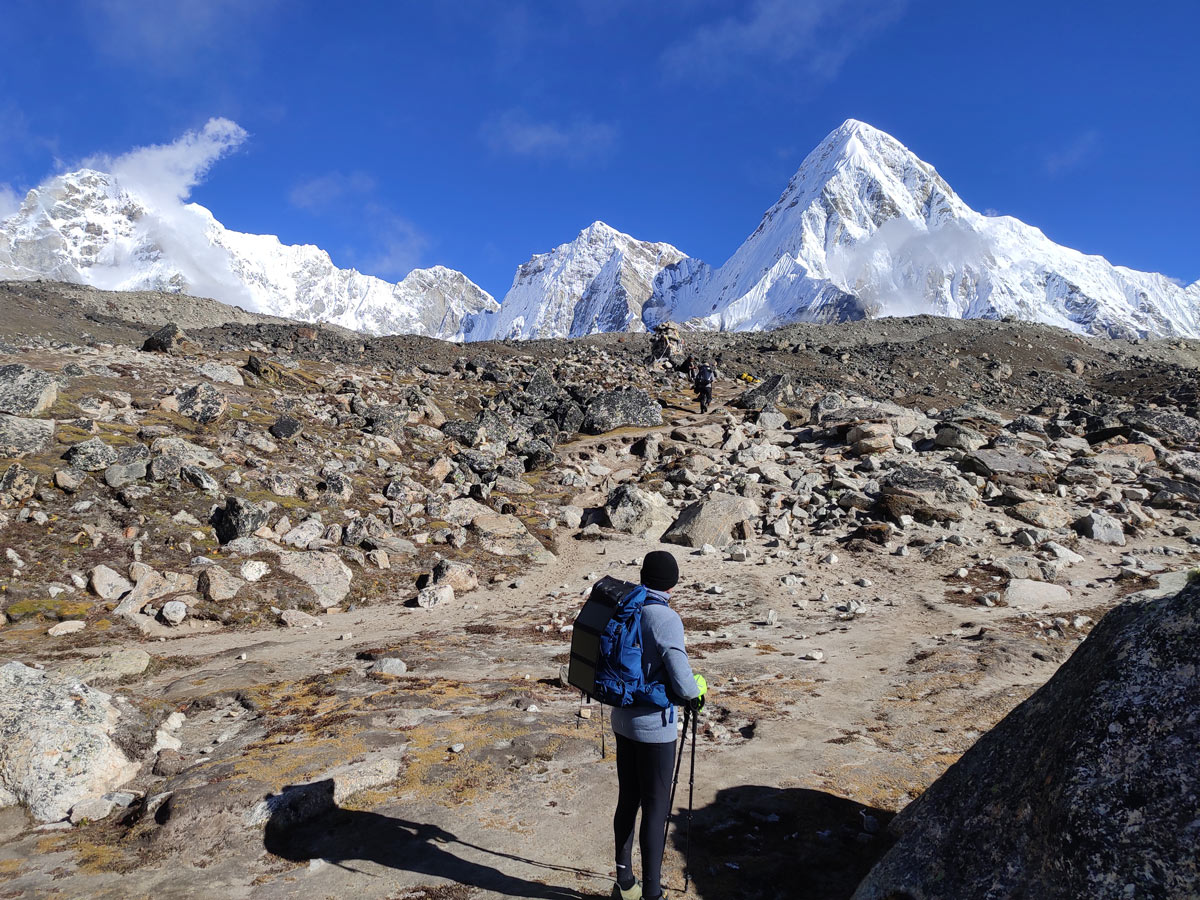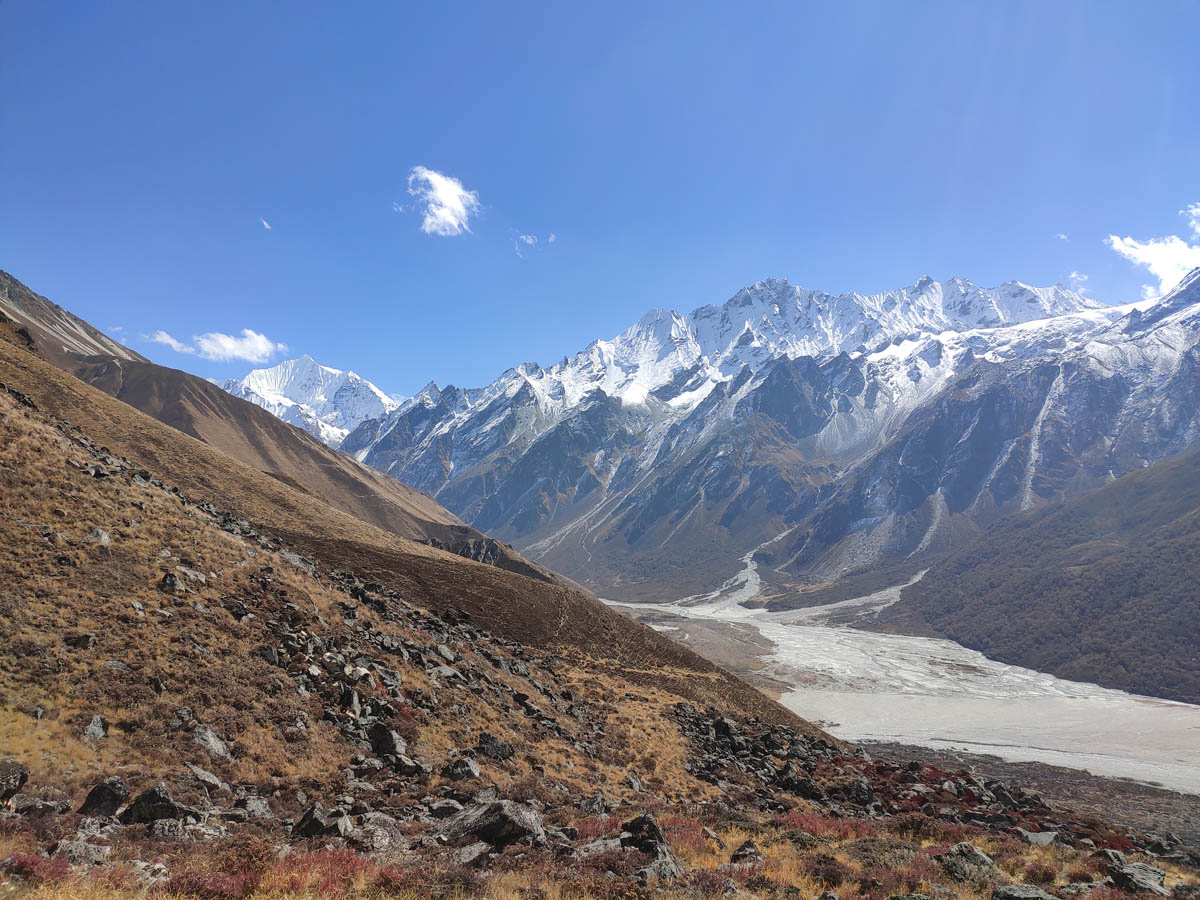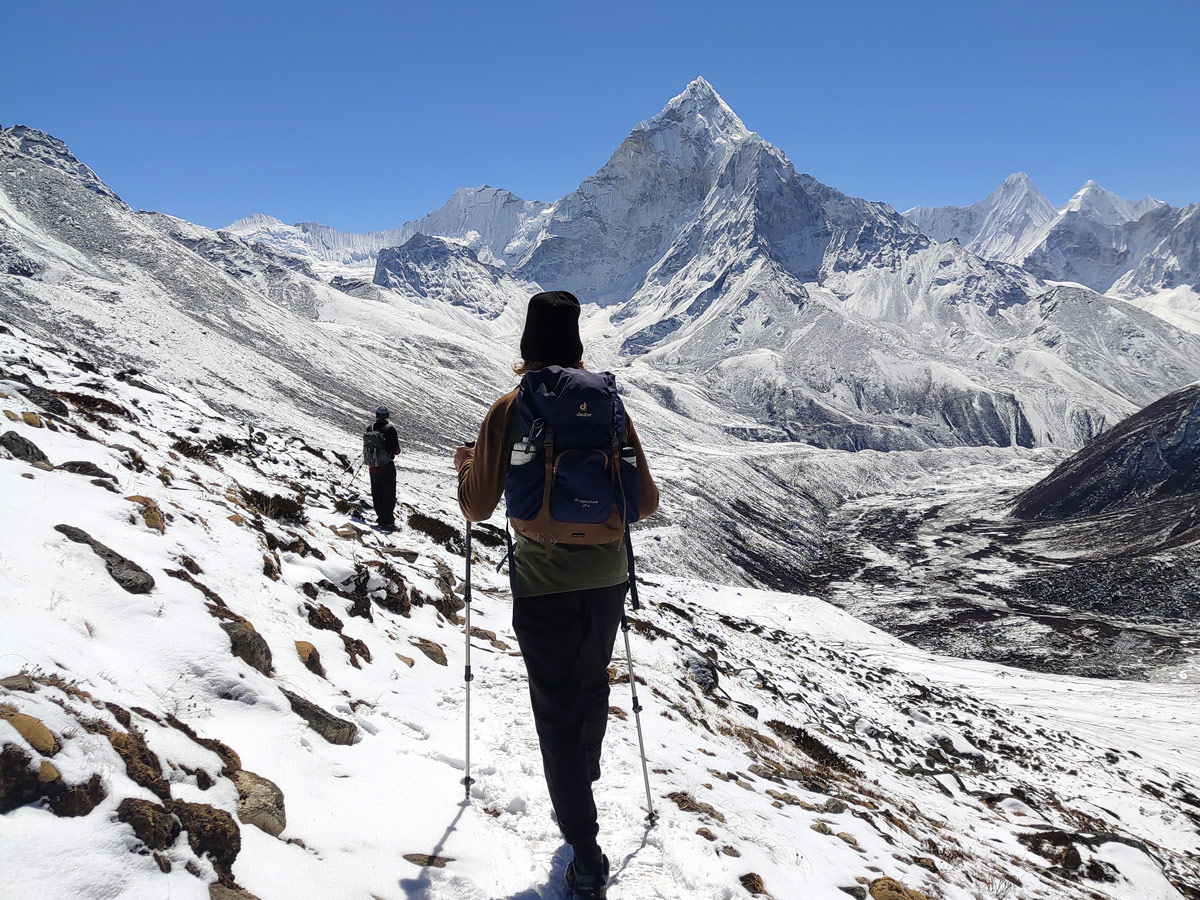The journey to the highest peak in the world- Mt. Everest is a dream for all the adventure enthusiasts which has been brought to life by the Everest Base Camp trek taking the trekkers to the foot of the mecca.
With its unparalleled natural beauty and awe-inspiring scenery, this trek is a window straight to the heart of the Himalayas. It beckons a huge number of visitors from all around the world.
However, with this influx comes significant challenges to this delicate ecosystem, the wildlife residing here, and the local communities calling it home.
If you are a trekking enthusiast and want to explore the region while also being considerate of the environment and treading lightly, you must adhere to certain practices for a sustainable Everest Base Camp trek.
But the question is how does one do that? Therefore, in this blog, we explore the whys and the hows of embracing responsible trekking practices to achieve a sustainable Everest Base Camp trek.
Understanding the Ecological Footprint of EBC Trek
While the Everest Base Camp trek has managed to make every adventurer’s Everest dream come true, the popularity of this trek has also had certain negative impacts on the region jeopardizing the beauty and sanctity of the Everest region.
The main challenge that the influx of visitors has caused is the environmental challenges. The Everest region is seriously struggling with waste management issues, which is surprisingly not limited to the base camp and has even spread to Mt. Everest.
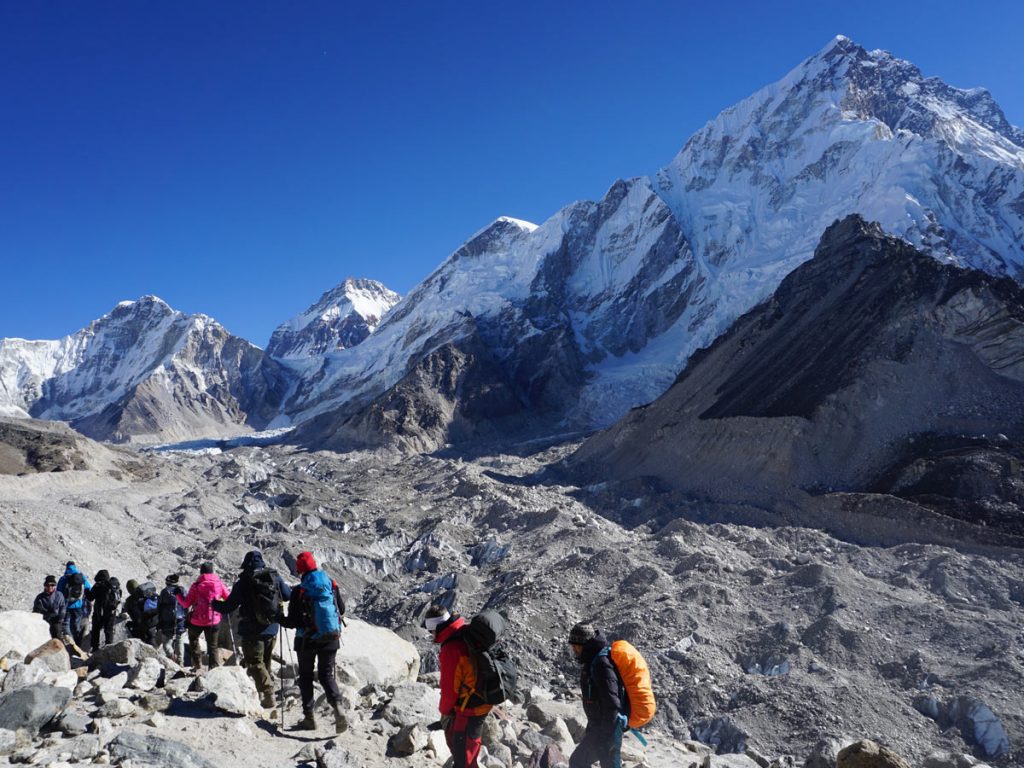
Lots of waste has been accumulated on the trails of the Everest Base Camp trek including sizeable amounts of plastic bottles, and food packaging materials.
With limited proper disposal facilities, the waste has only been piling up substantially with each passing day full of trekkers in the region. This detracts from the natural beauty of the region and poses a threat to the wildlife residing there.
Besides this, the increasing use of fossil fuels to meet the demands of the trekkers has been leaving huge carbon footprints in the region leading to the melting of glaciers and threatening the fragile Himalayan ecosystem.
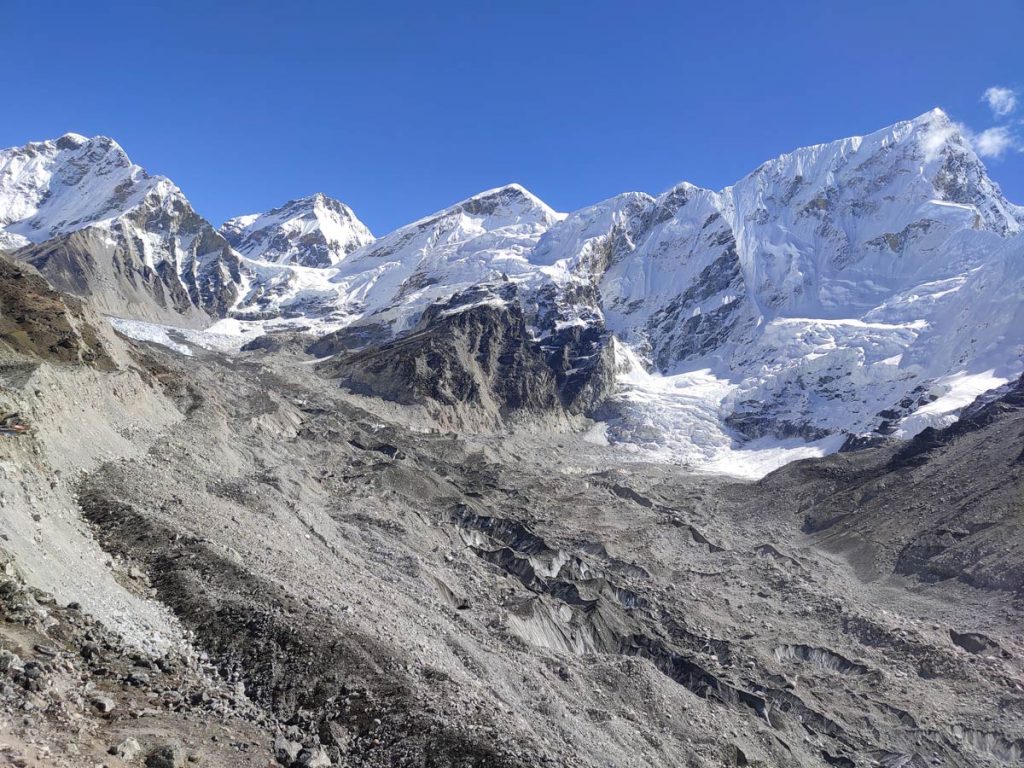
To meet the demands of the trekker’s traffic, the resources are exhausted in lodges, restaurants, and sanitation facilities leaving very limited basic resources like water and land for the locals in the region.
Although tourism sustains the economy of the region, during off seasons like winters and monsoons, the region also suffers a socio-economic crisis with no alternative economic resources.
Minimizing Your Environmental Impact
For those looking for a starting point to embrace responsible tourism, minimizing your environmental footprint is the answer. By adhering to this pillar of sustainable trekking, you can ensure minimal disruption to the ecosystem of the Everest region.
Smart Packing
Packing for the Everest Base Camp trek is a daunting job for most of the trekkers as they are not completely sure what to carry and what to leave behind. This often leads trekkers to overpack everything they think they might need during the adventure.
However, it is the porters who carry your luggage during the trek. Therefore, every kilogram that you add to your luggage further adds to the carrying capacity of the porter- which is limited to ensure ethical porter practices.
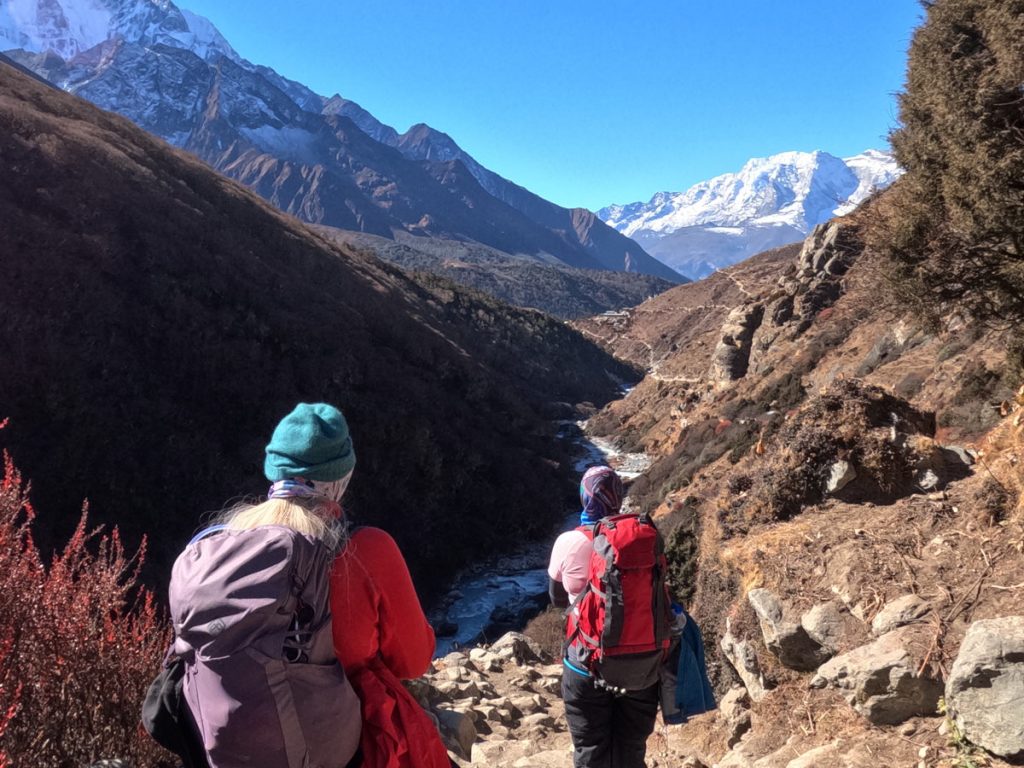
Thus, to ensure the lightness of your backpack, it is advisable to pack light and pack smart. You can opt for multi-functional and convertible clothing that can be adjusted according to the demand of the weather.
Also, pack biodegradable toiletries and items like reef-safe sunscreen as it ensures minimum chemical residue during your journey.
Waste Management
Embracing the standard ‘leave no trace’ principle is the pillar of sustainable trekking when you are trekking in an ecosystem as fragile as that of the Sagarmatha National Park.
However, the lodges and teahouses are embracing various eco-friendly ways for waste management which requires cooperation from the trekkers too.
Given the challenging conditions of the trek, waste management becomes difficult with a gain in altitude.
To tackle this problem, the ‘pack-it-in, pack-it-out’ rule is the key. Make sure to not litter around and bring back whatever you carry to the trek along with the waste and dispose of it at designated waste collection points in the Everest region.
Small steps like carrying reusable water bottles, using handkerchiefs instead of tissue papers, avoiding plastic packaging, and storing your snacks in refillable containers can go a long way to ensure your contribution towards waste management in the region.
Minimize Single Use Plastics
Like every other fragile ecosystem in the world, the Everest region too is battling with plastic pollution as it is becoming a great threat to the Himalayan ecosystem. Therefore, it is strictly advised to not carry single-use plastics in the region.
If you are carrying disposable toiletries like a single-use razor, be mindful to dispose of them at the correct places. It is advised to carry a water filter and a bottle of your own rather than buying bottled water.
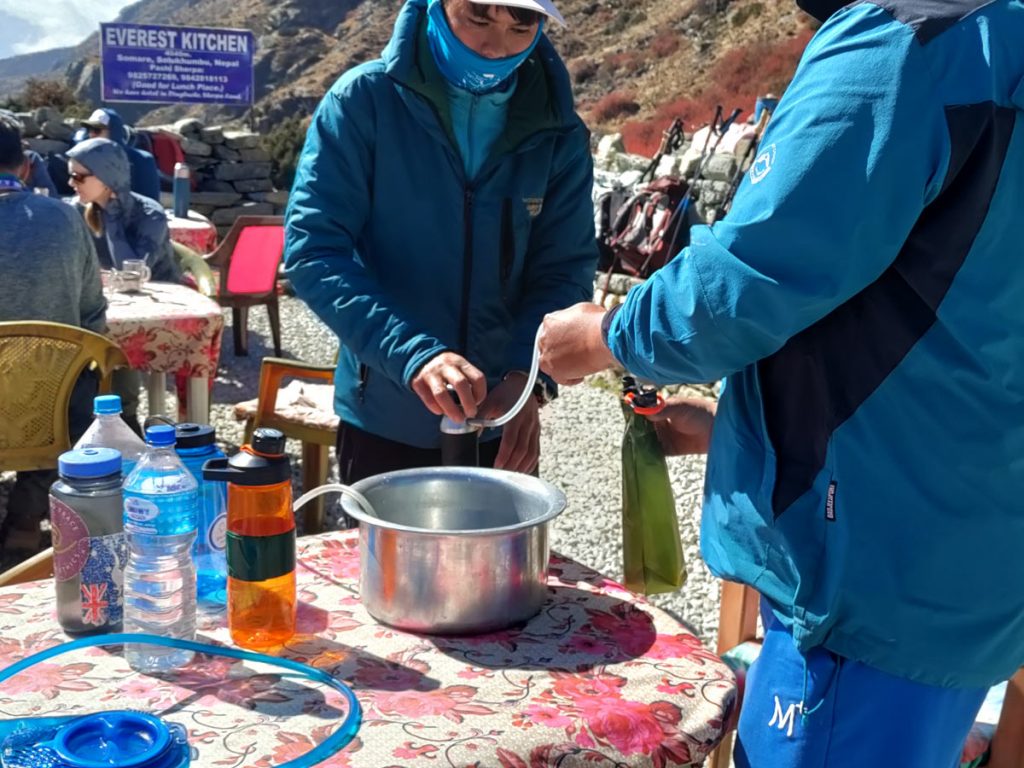
It is even better if you can instead carry a bag and collect some of the plastic waste you spot along the trail and bring it out when you complete your trek as it helps minimize the hazards to the beautiful Himalayas.
Respect the Trails
To minimize the trekkers’ footprints on the delicate Himalayan landscapes, it is important to respect the trails.
The foot traffic on the EBC is high given the popularity of the trek, so one should always stick to the designated trekking trails in the region.
The standard Everest Base Camp trail is designated after analyzing factors like weather patterns, avalanche risk, and terrain stability.
Straying off the trail might expose you to several risks like hidden crevasses, and loose rocks, and even lead to erosion as many areas are with loose scree.
The new tracks you create while straying off are highly prone to be washed away by rain and wind causing risk to other trekkers in the region.
Also, as the Khumbu region is rich in vegetation, you might stomp the delicate vegetation of the region by stepping outside the trail along with disturbing wildlife in the region by accidentally disrupting their route of movement.
Support Local Communities
Contributing to the local economy is one of the major aspects of responsible tourism as the area is highly reliant on trekkers and tourists for their livelihood. Therefore, it is your responsibility to support the local communities.
You can do this by staying at teahouses owned by local families and purchasing local products. The Sagarmatha National Park features numerous good local lodging options with delicious local food which you can opt for.
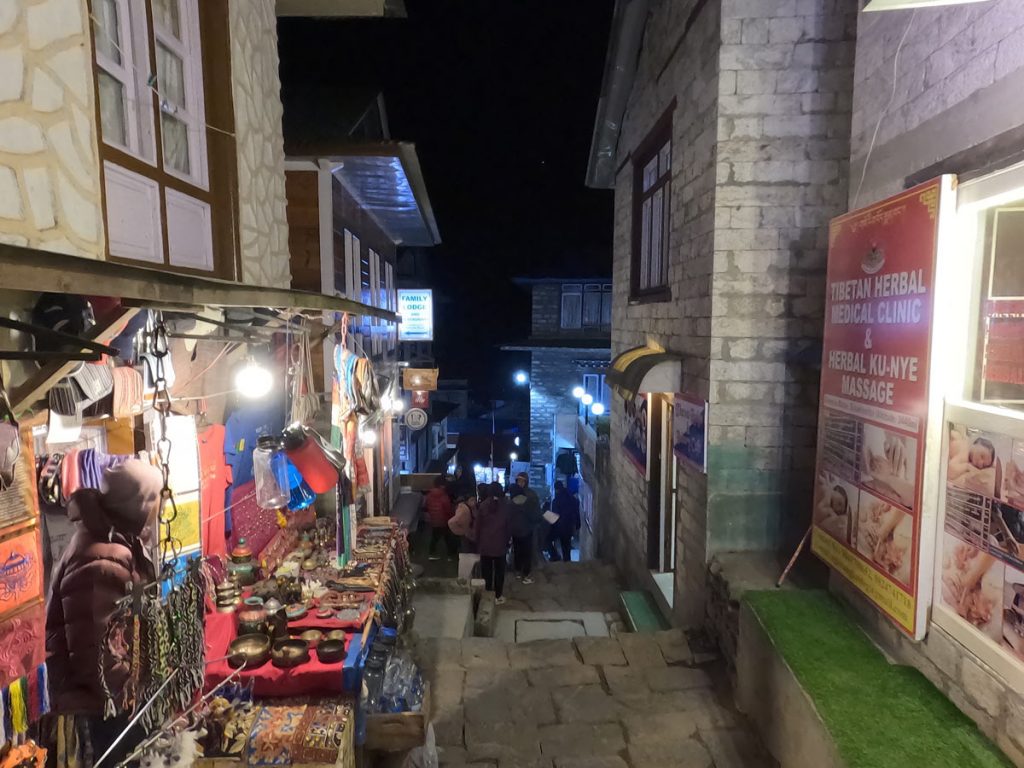
You can also purchase some trekking essentials from local shops at lower altitudes in the Everest Base Camp trek distance.
If you are going souvenir hunting, you can explore the local markets of the Khumbu region, especially Namche Bazaar, and the local artifacts might even take you by surprise.
Respecting Local Environment and Wildlife
The Khumbu region can also be considered a biological hotspot as it features a huge variety of animals, plants, and birds in its delicate environment. So, as you are exploring the region, it is important to consider these too.
Water Conservation
In high altitudes like the Everest region, water is a precious resource and even a luxury at times. Given the climate change, the Everest region is facing a real water scarcity as the glaciers and snowfields feeding the rivers are threatened.
Water sources for most of the teahouses and lodges in the region are basic water collection systems like hauling a decent amount from nearby streams. In that case, a constant and unlimited water supply might be a challenge.
Therefore, be mindful of your water usage as every drop counts. Take shorter showers and opt for alternatives to washing like using a washcloth.
Don’t leave the shower on while applying soap and use a biodegradable soap that breaks down easily.
Another way in which you can contribute is by supporting eco-friendly lodges that opt for sustainable methods like rainwater harvesting, low-flow showerheads, and water-efficient toilets.
Local Flora and Fauna
The Khumbu region is home to a wide range of flora and fauna including some of the endangered, elusive, and rare ones. Therefore, it is the responsibility of the trekkers to ensure that they are not disturbing the wildlife in any way.
As mentioned earlier, one major step is to not stray off from your designated trail. Besides this, be mindful to observe the wildlife from a safe distance rather than intruding in their space which might put you at risk.
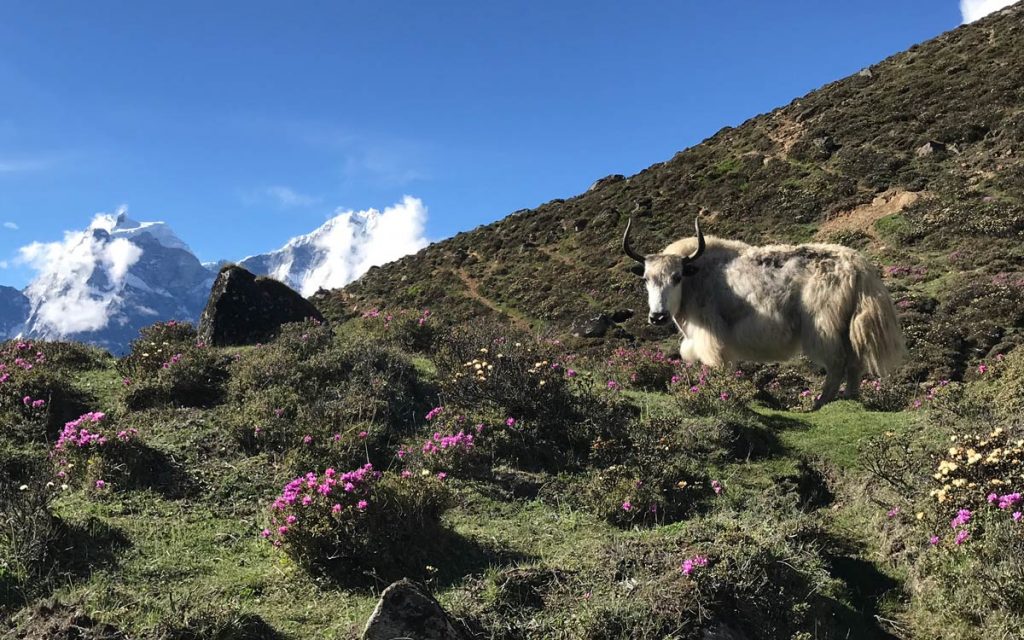
Do not make sudden movements while in proximity and avoid making loud noises as this might disturb them.
Although it might seem harmless at the time, do not feed the animals in the region as this might alter their natural behavior making them dependent on humans in the long run.
Energy Conservation
Locals and teahouses in the Everest region rely highly on traditional energy resources like firewood and kerosene for cooking, heating, and warming purposes. While these resources allow them to sustain, they are constantly damaging the Himalayan ecosystem.
To change this, fuel efficiency becomes one of the pillars of a sustainable Everest Base Camp trek. With the increasing awareness of sustainability, many teahouses in the region have switched to sustainable sources like solar panels for heating and lighting.
As trekkers, you can stay at these eco-conscious lodges and contribute to reducing the reliance on fossil fuels. Besides this, you can also carry alternatives like solar chargers which reduce your reliance on electricity.
Leave a Positive Footprint
While the things listed above allow you to leave nothing behind and ensure a sustainable adventure, a positive footprint is something that you might want to leave behind allowing the future trekkers to enjoy the environment and wildlife of the region.
The following additional tips allow you to make your Everest adventure enjoyable and sustainable along with a touch of satisfaction in protecting the region for future adventure enthusiasts:
- As a part of responsible tourism, you can create employment opportunities for locals by hiring local guides and porters who are well-versed in the region and can guide you around the area better.
- While purchasing souvenirs, it is better to opt for handmade and authentic handicrafts from local artisans rather than purchasing mass-produced ones.
- Every dollar you spend here makes a difference. Therefore, opt for local and eco-conscious teahouses that are trained in sustainable practices.
- As the Khumbu region is big on cultural values, make sure to respect and embrace cultural sensitivity. Dress modestly, especially while visiting religious places.
- Engage in cultural exchange in the region to prevent cultural dilution of the culturally rich Khumbu region. Learning a few phrases of Nepali starting from Namaste can go a long way.
- Always seek permission before clicking pictures at religious sites and even of people.
- If possible, do your bit by joining initiatives dedicated to cleaning the trails like a clean-up trek. Carry out as much waste as possible.
- Opt for sustainable trekking gear made by companies opting for ethical manufacturing processes to carry during your Everest Base Camp trek adventure.
- If you are planning to use shower and laundry services on the EBC trek, make sure to carry eco-friendly soaps and detergents. However, it is best to avoid these and pack clothing that requires minimal washing to reduce water usage.
- If you are carrying any battery-operated devices, make sure to not use disposable batteries. Pack dead batteries and dispose of them when you reach the lower altitudes as dead batteries can be a hazardous waste in the mountains.
